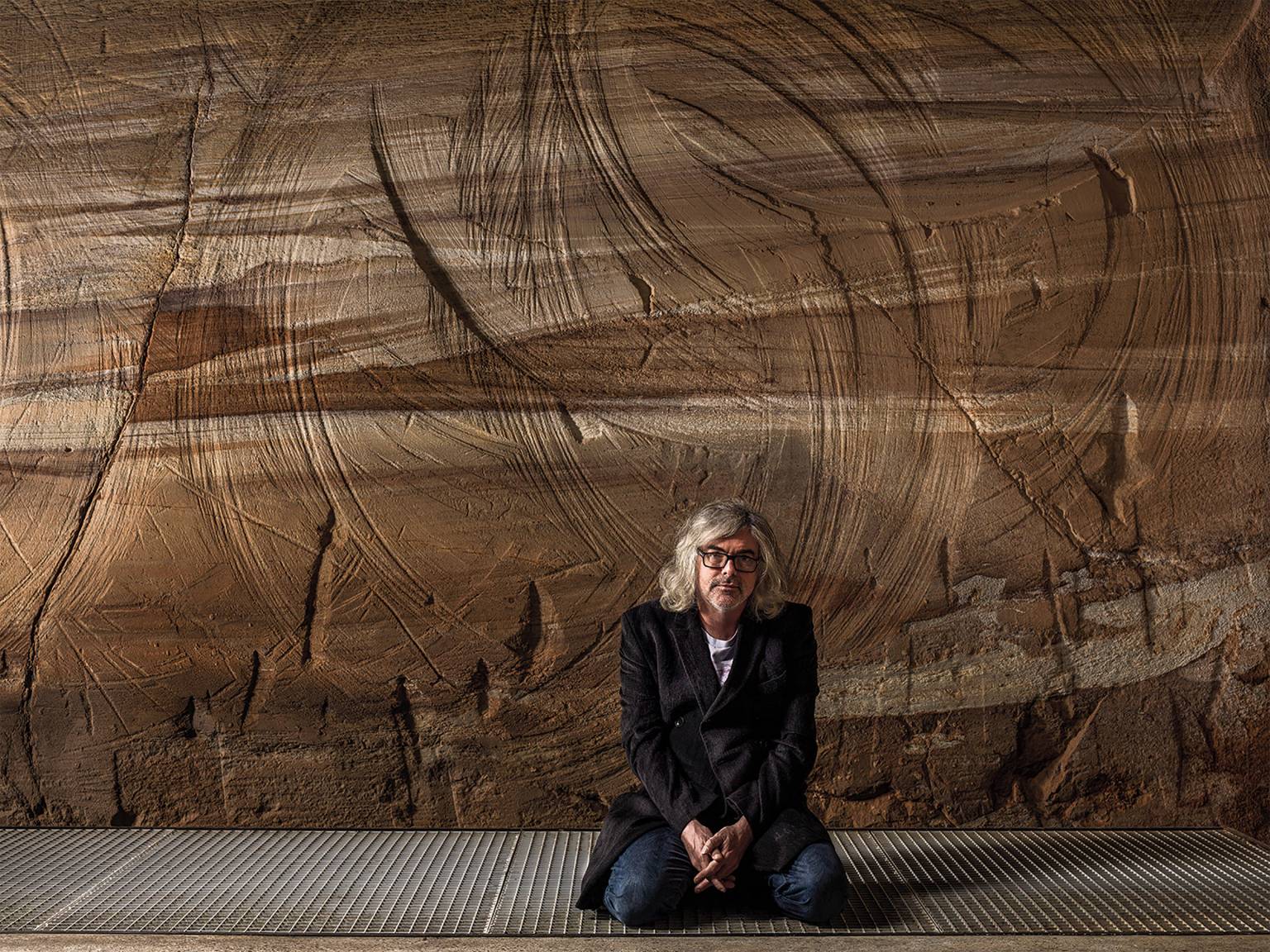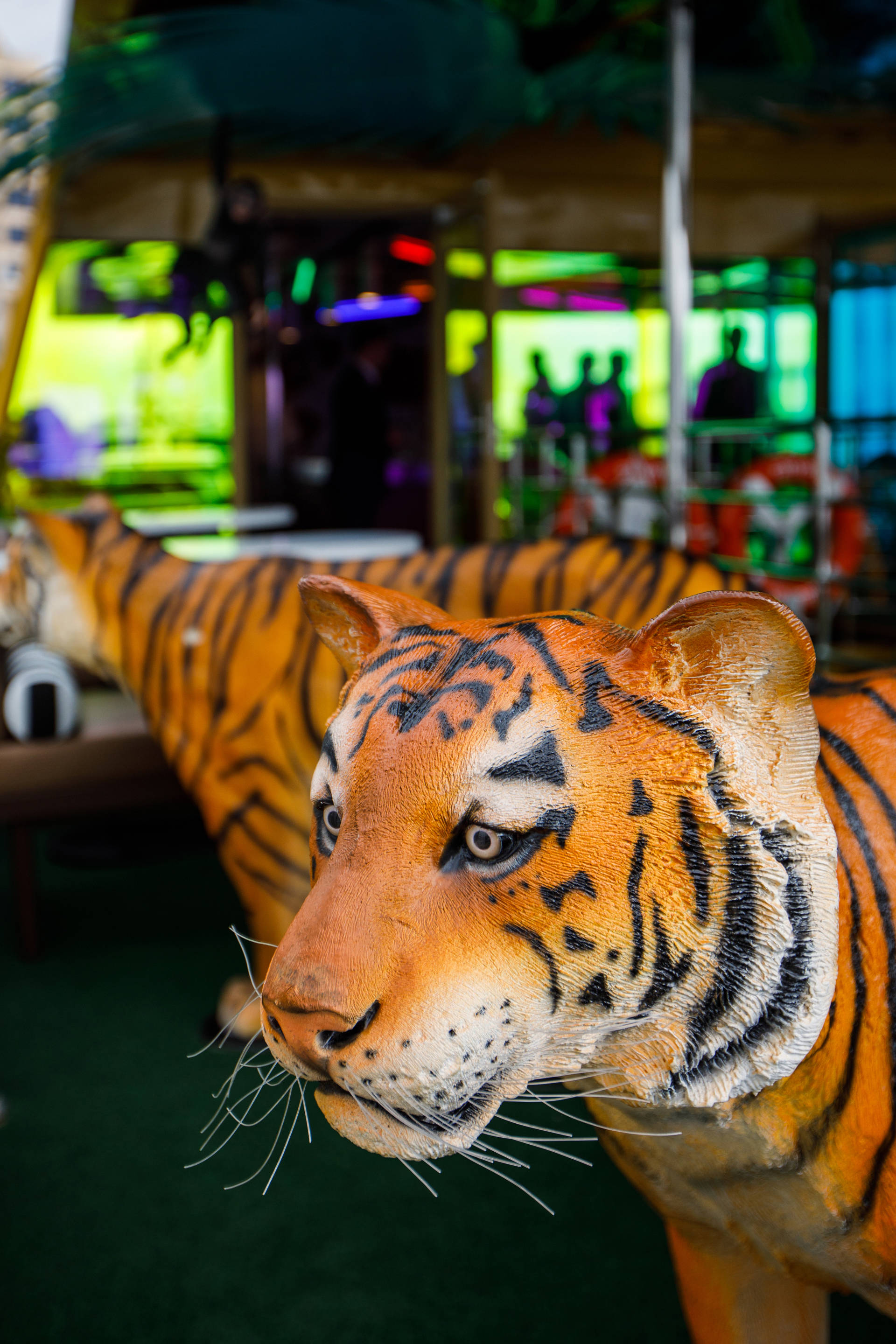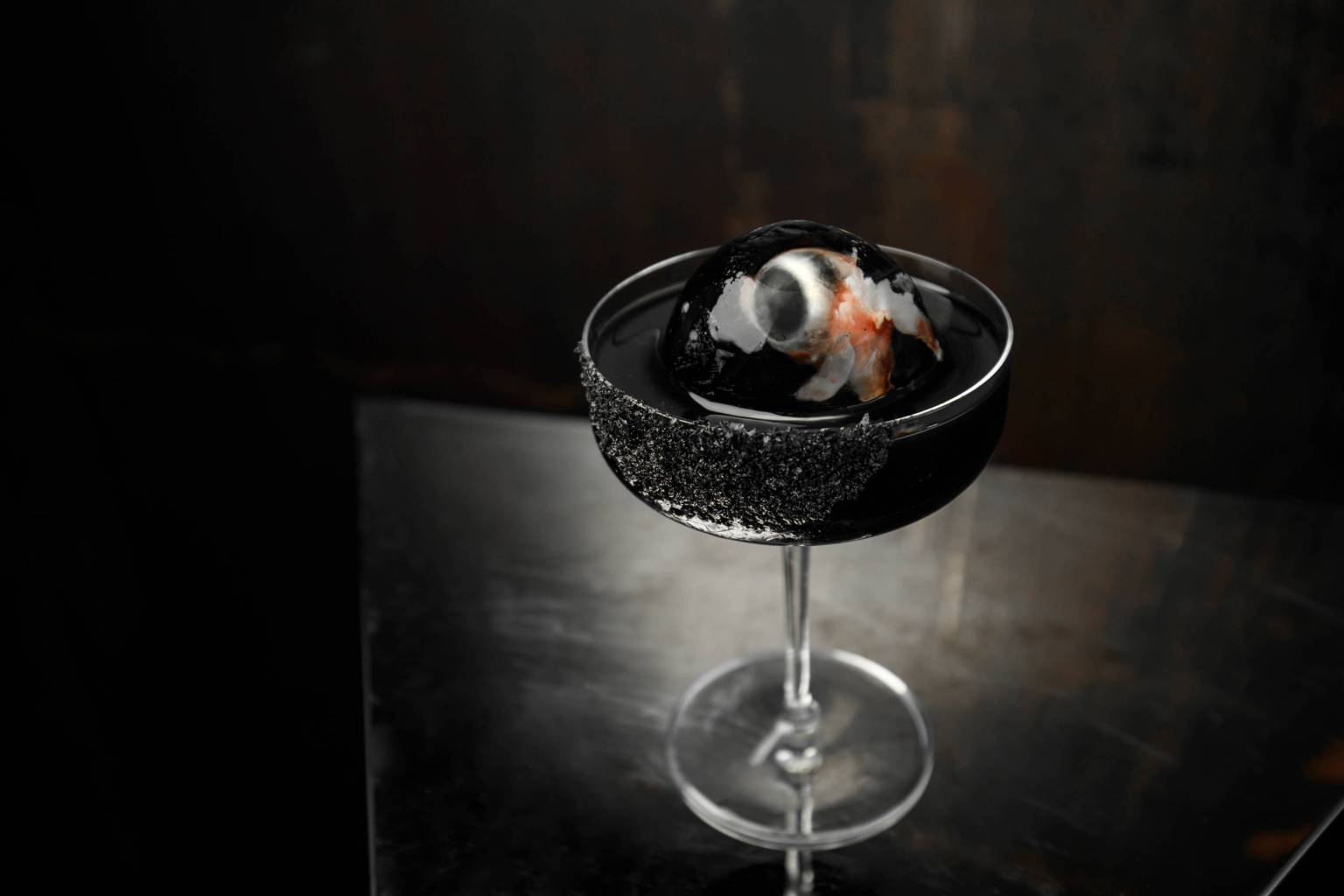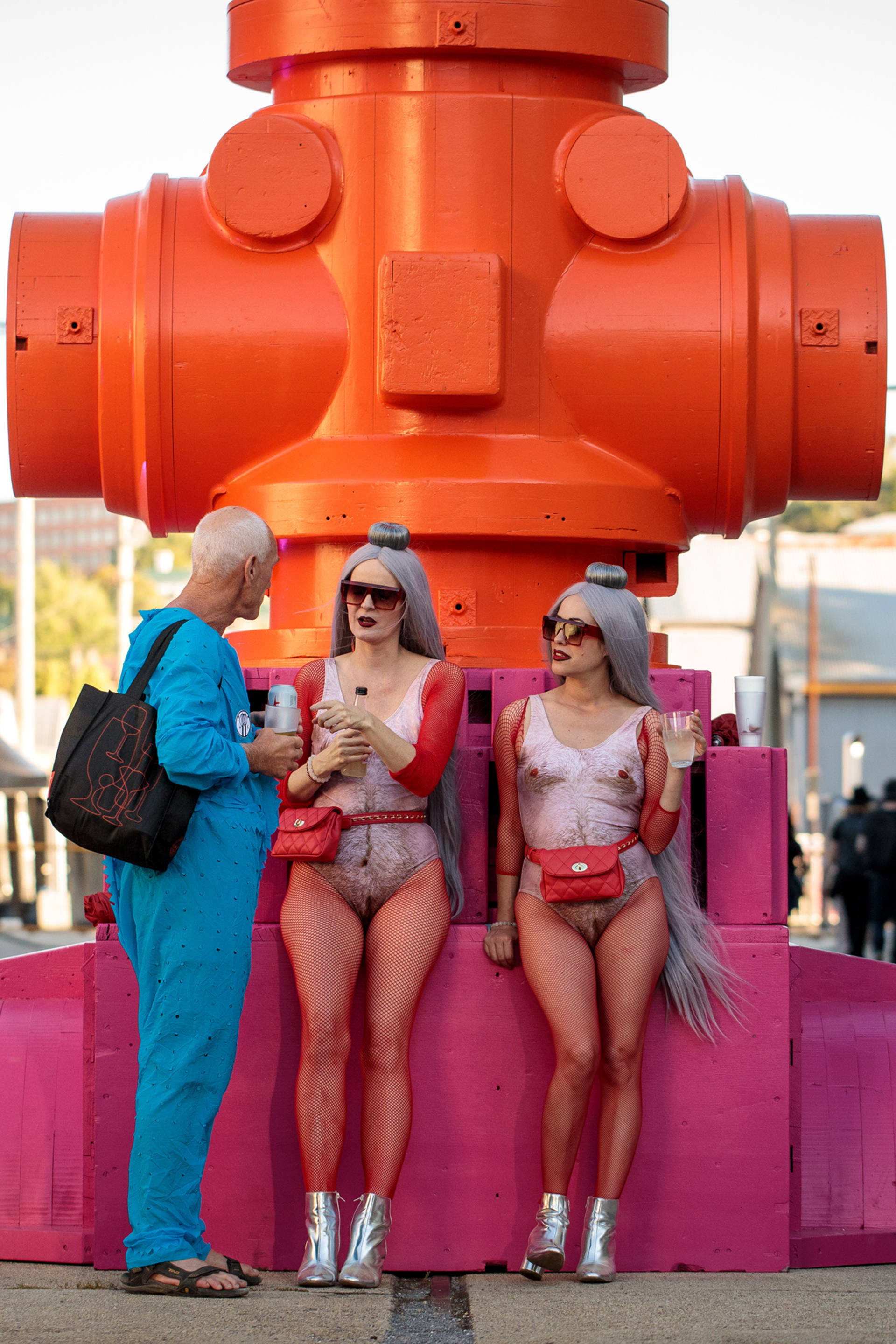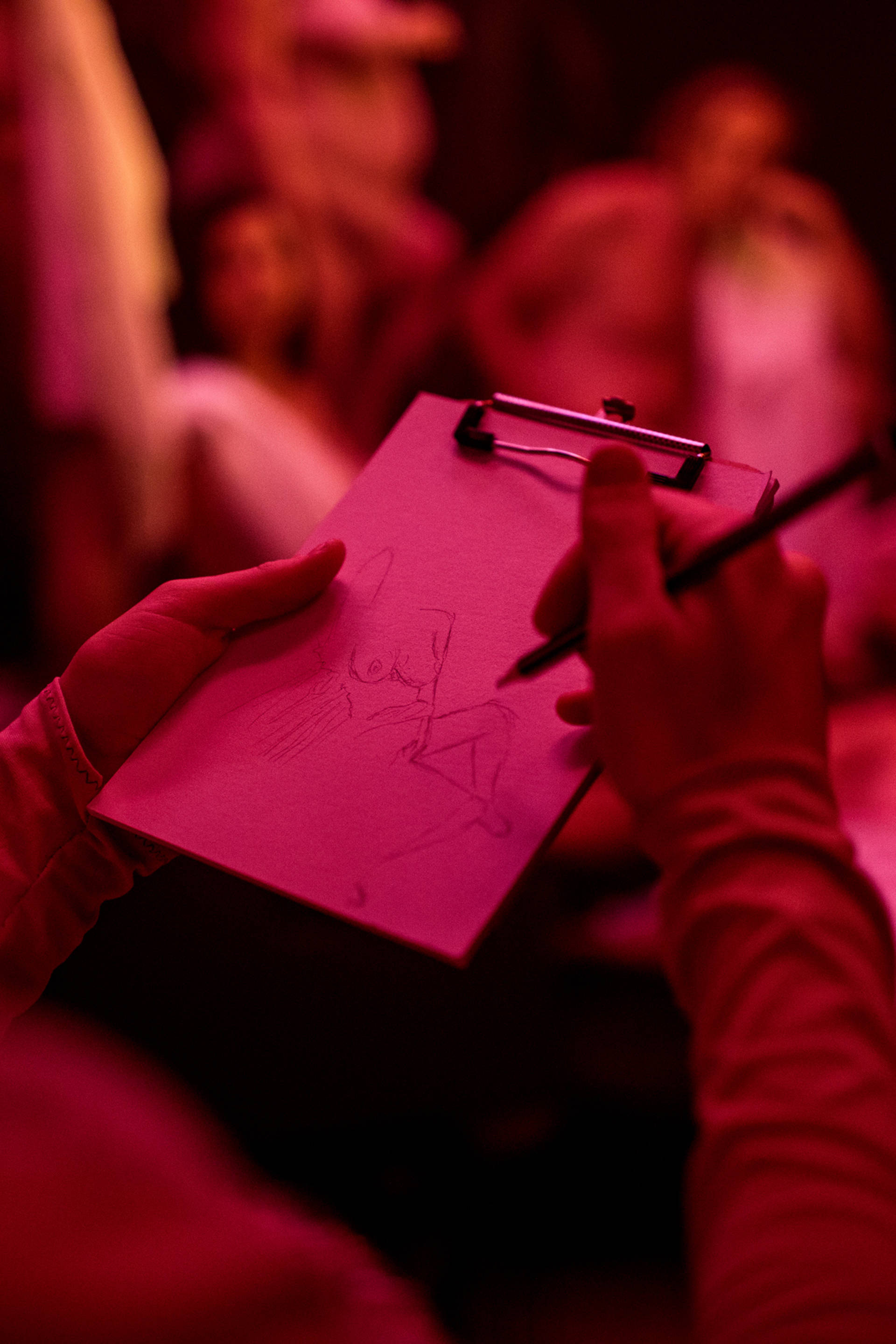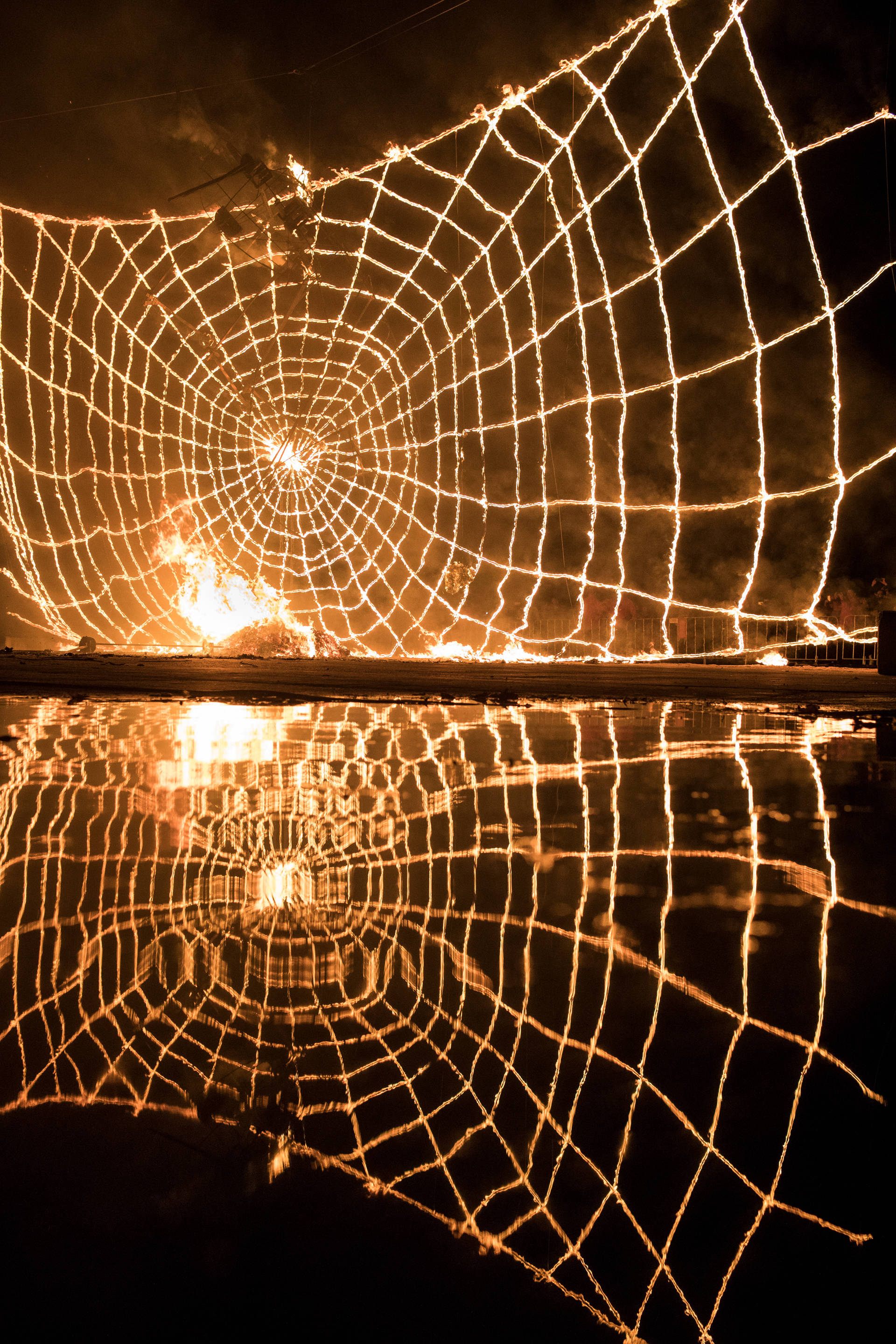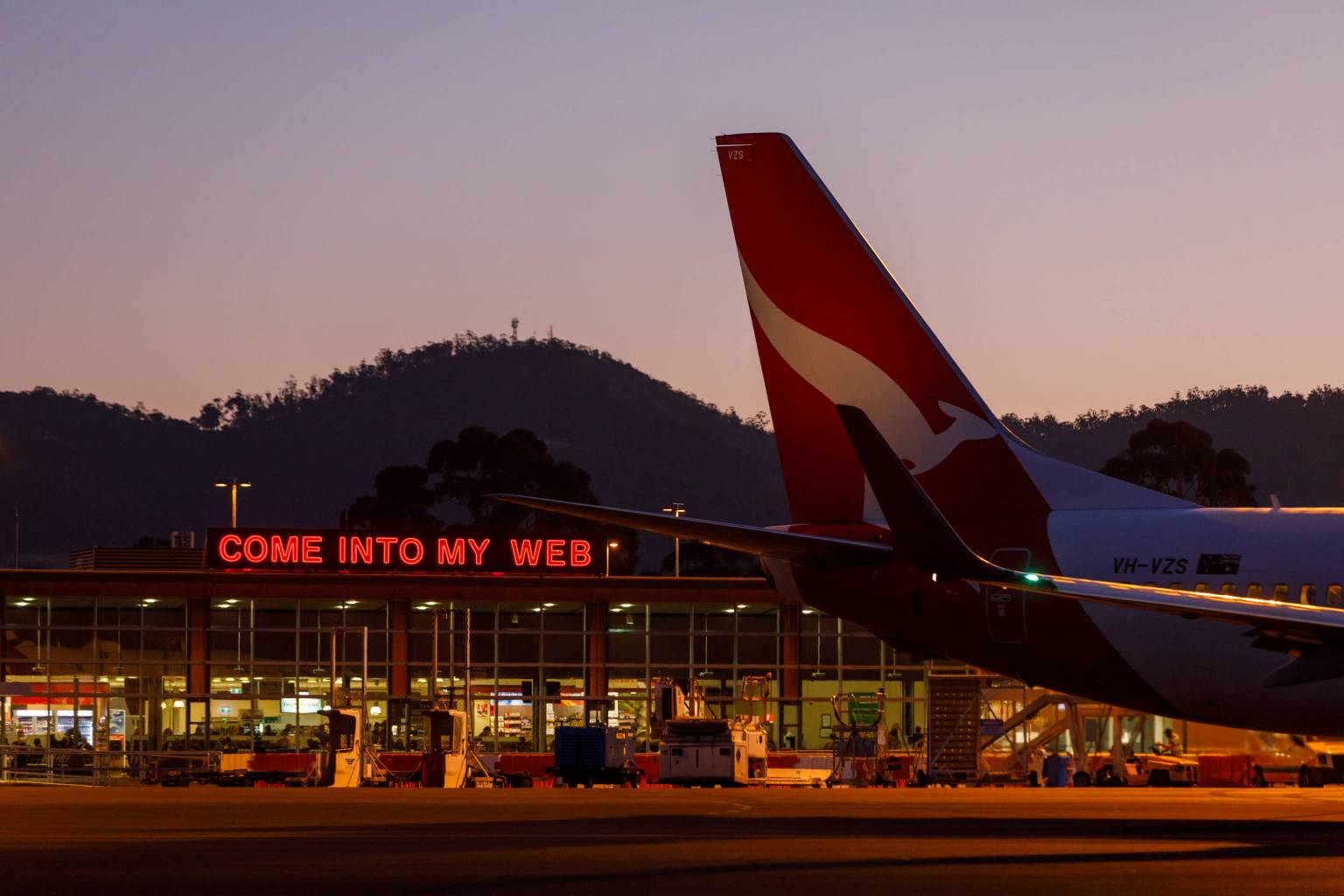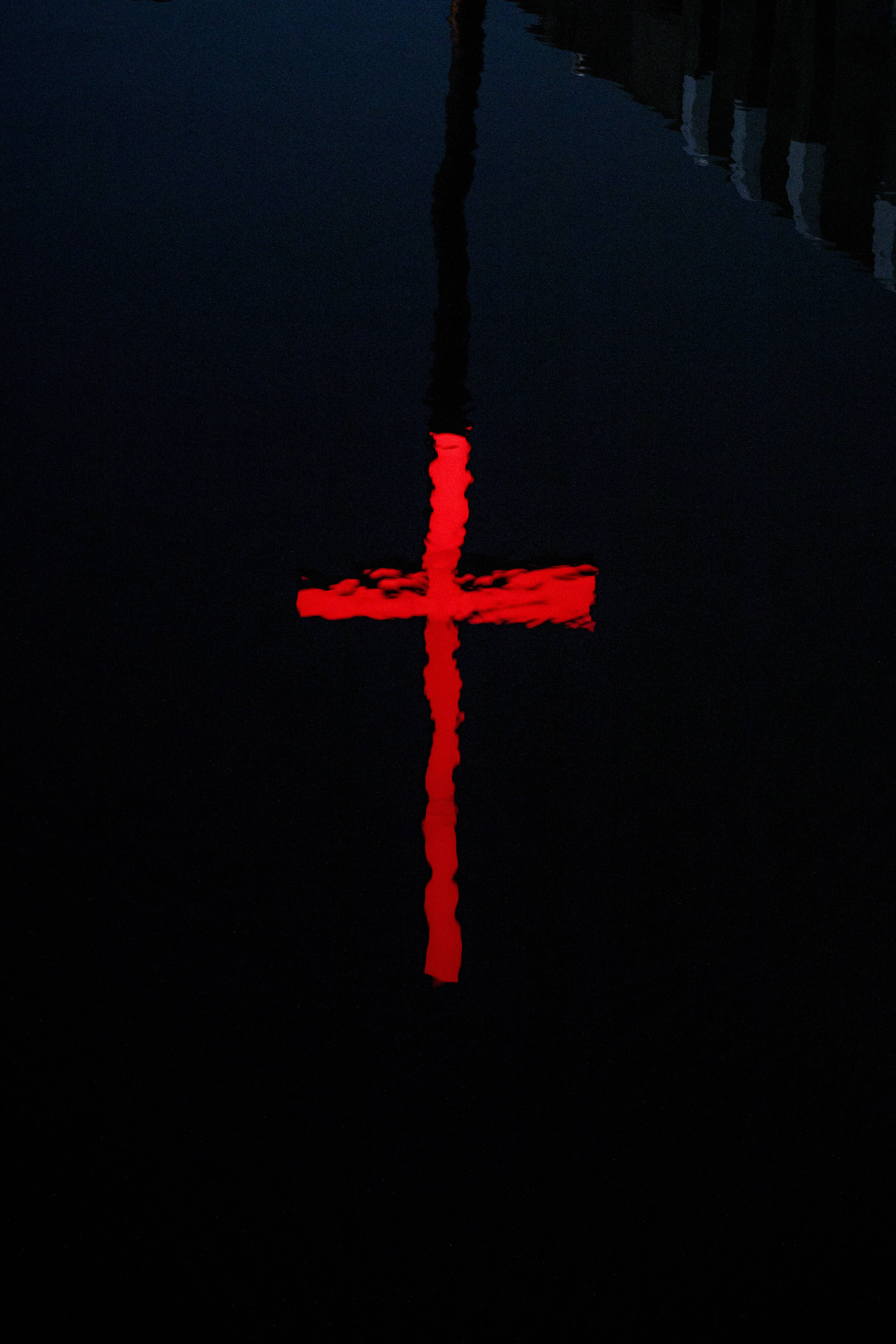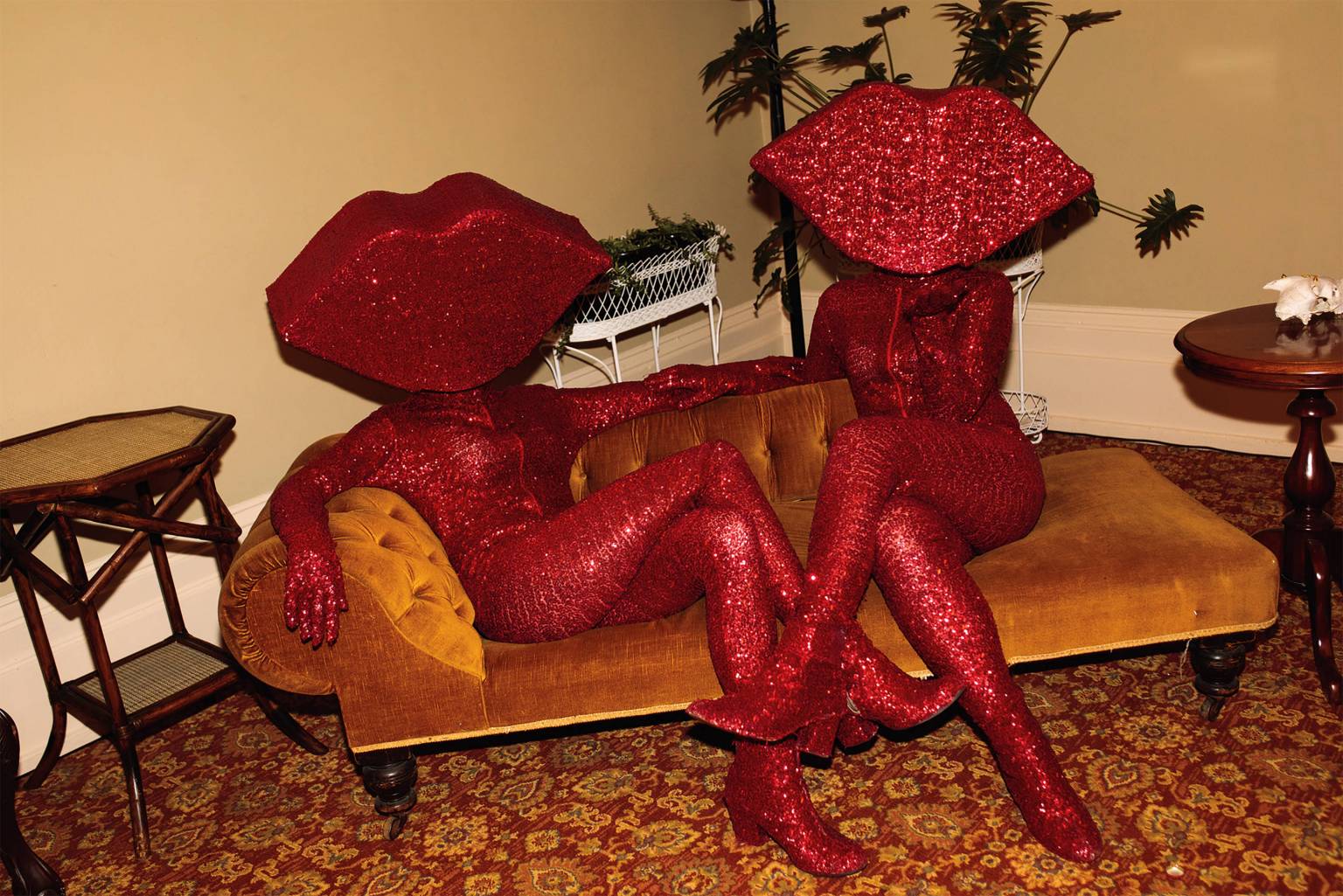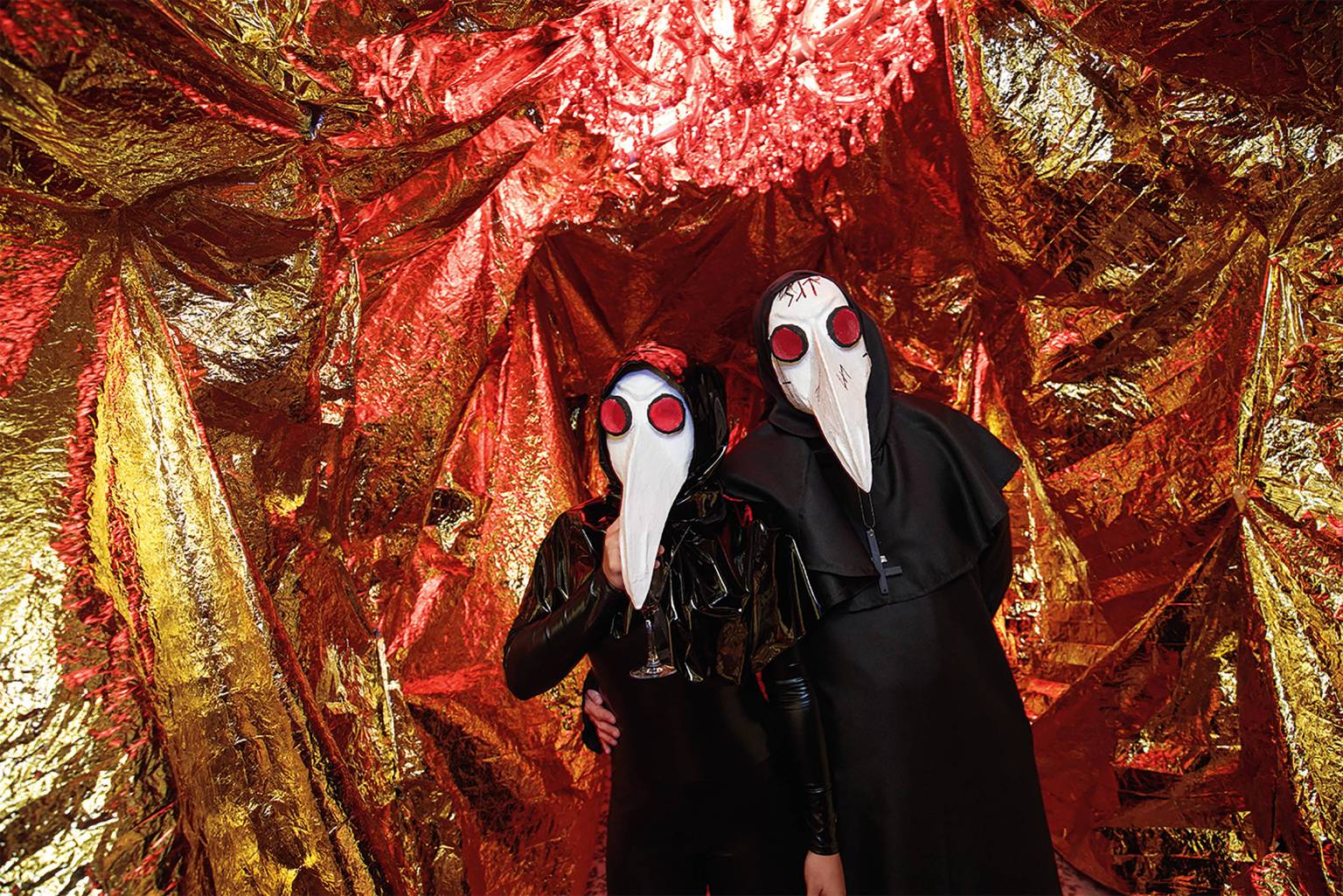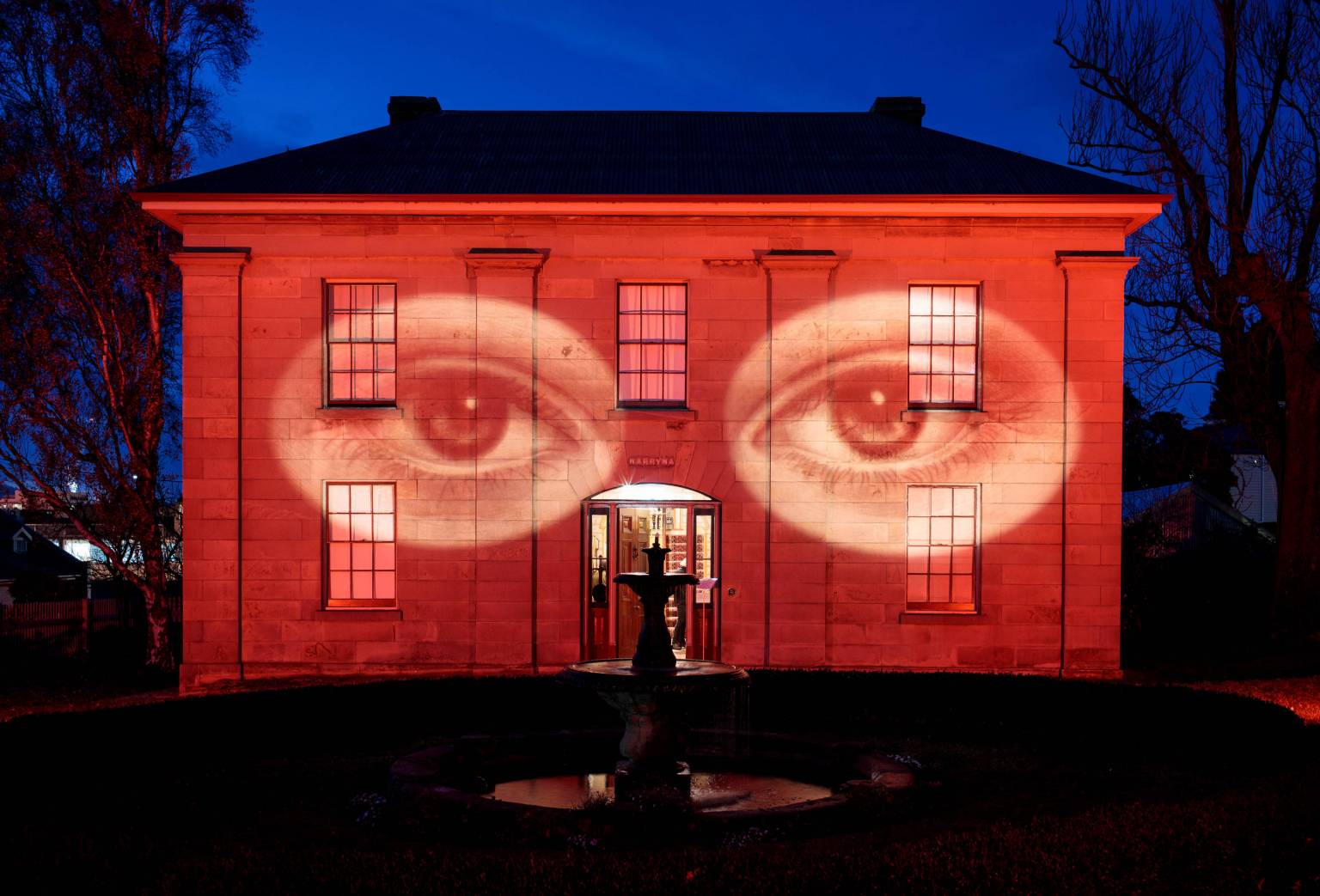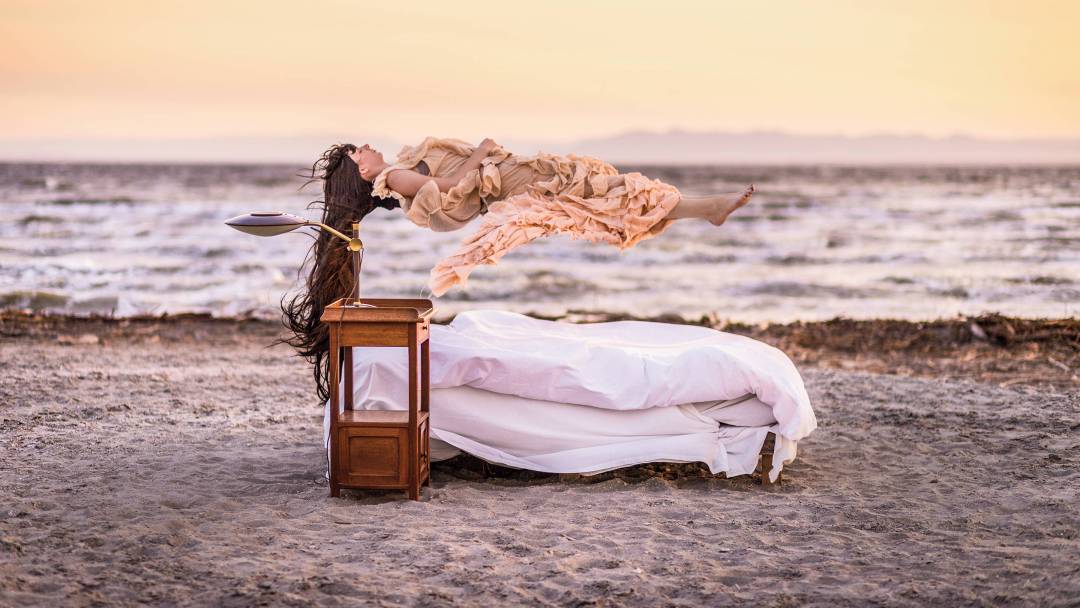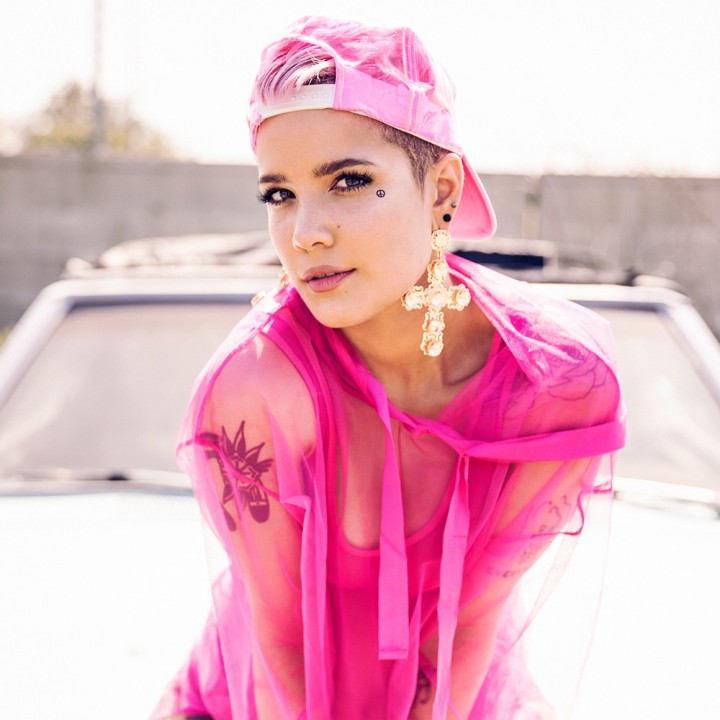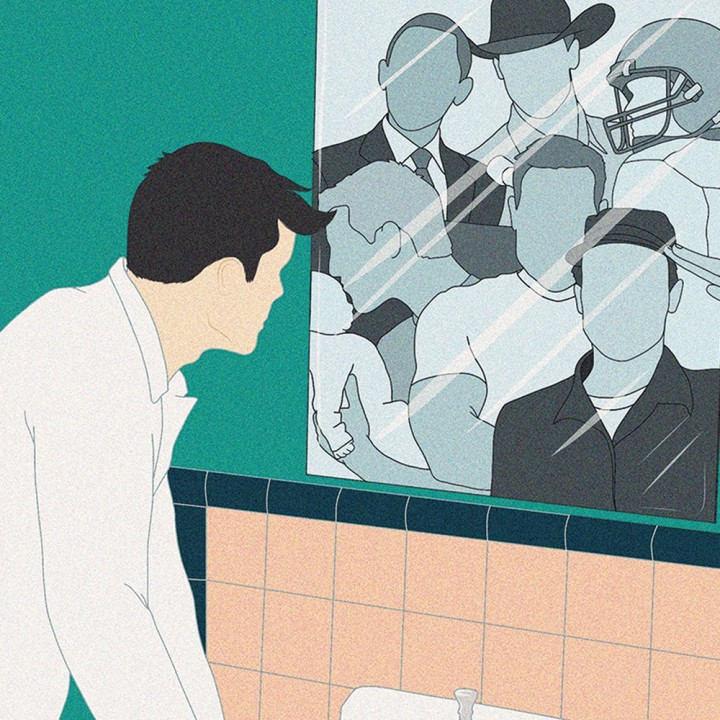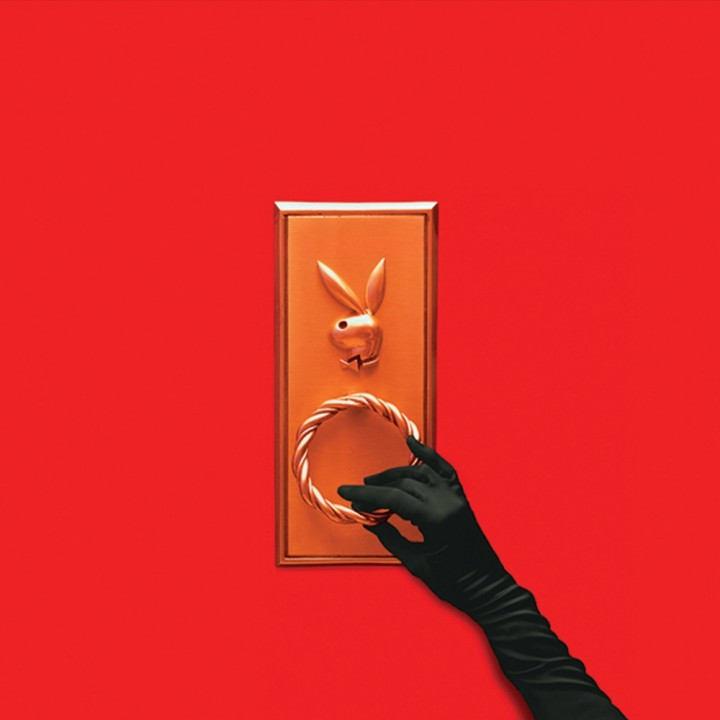
Art at the Edge of the Earth
How two festivals, one museum and an eccentric gambler's vision are transforming Tasmania
Moments before dawn on the morning after the southern hemisphere’s winter solstice, more than 1,500 people, wearing only towels and red swimming caps, crowded onto a narrow beach in Hobart, Tasmania—one of the southernmost cities in the world. As the pink and orange pastel glow of the sunrise bathed the crowd, a voice over a loudspeaker announced, “Now is the time: Take your clothes off!” A thunderous beat dropped, as did the towels, and with a collective scream that perfectly echoed the screeching gulls overhead, the swimmers threw themselves into the bracing waters of the River Derwent. Seconds later they reemerged, wearing expressions of ecstatic triumph. One newscaster, securing his towel, ran to kiss his wife and baby. “Saw some people from work,” he said. “We’re best friends now!”
Featuring exhibitions of such heavyweight artists as Marina Abramović and Matthew Barney, MONA’s gallery, a labyrinthine space carved into a Triassic stone cliff, eschews museum conventions such as wall labels and, says Walsh, the tendency to ignore the two biological imperatives that drive people to make art: “fucking and killing.” It also pushes against the digitization of experience with the large-scale and sensorially disorienting works in its permanent collection, cheekily named “Monanism.” Take James Turrell’s Unseen Seen, a kaleidoscopic light-based installation inside a giant white sphere. Walsh describes Turrell’s art as “heroin but without the side effects.” (Participants are required to sign waivers before entering.)
Australian sculptor Greg Taylor’s Cunts…and other conversations—a series of 151 life-size porcelain casts of vaginas spotlit along a darkened pathway—highlights in its scale each body part’s individuality as well as the absurdity of censoring the female body on social media and elsewhere. Women can be overheard telling companions about finding their double. (Versions of the sculptures also appear in the gift shop, as vagina-shaped hand soap.)
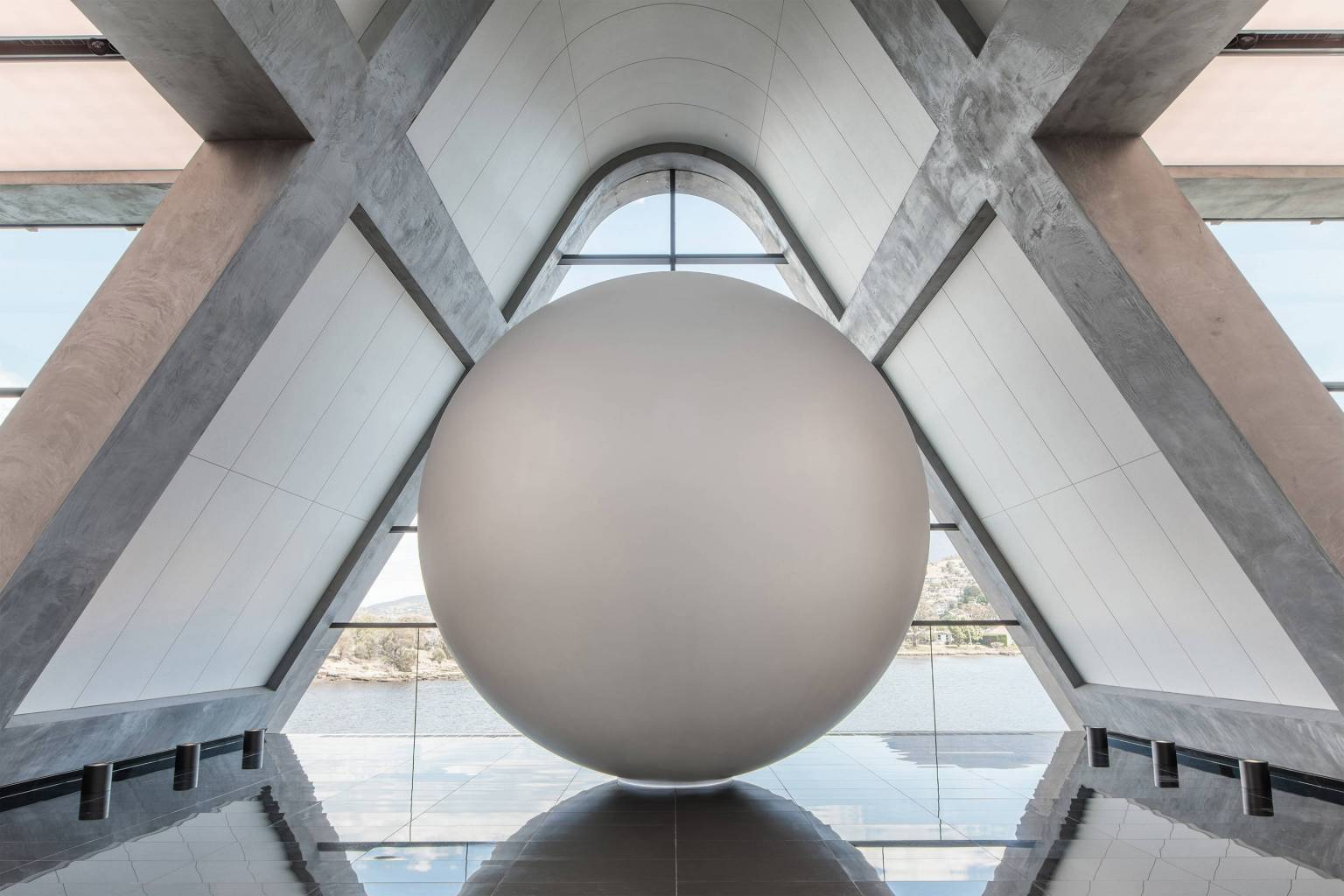
Walsh’s luck reverberates beyond MONA. International travel to Tasmania rose 18 percent in 2017 alone. In addition to the farmers’ stalls at the sprawling outdoor Salamanca Market (still Tasmania’s most-visited attraction; MONA is second), an ever-growing number of farm-to-table restaurants are benefiting from the surge. And in December, MONA announced plans for Motown, a roughly $287 million mini-village featuring a five-star hotel, playground, theater, outdoor performance space, library and spa designed by Turrell and Abramović that could open as soon as 2024.
For now, the two festivals, both overseen by Walsh, remain the most distinctive MONA-affiliated events as much for the diversity of their offerings as for their democratic atmosphere, with no VIP areas or exorbitant ticket prices. Mona Foma, curated since its 2009 inception by Violent Femmes bassist Brian Ritchie, has welcomed Nick Cave and the Bad Seeds, Amanda Palmer and Gotye, as well as more experimental work such as Eve Klein’s Vocal Womb, in which the opera singer performed while the interior of her body was projected onstage via a laryngoscope.
Why can’t darkness be good? The night is a time to dream
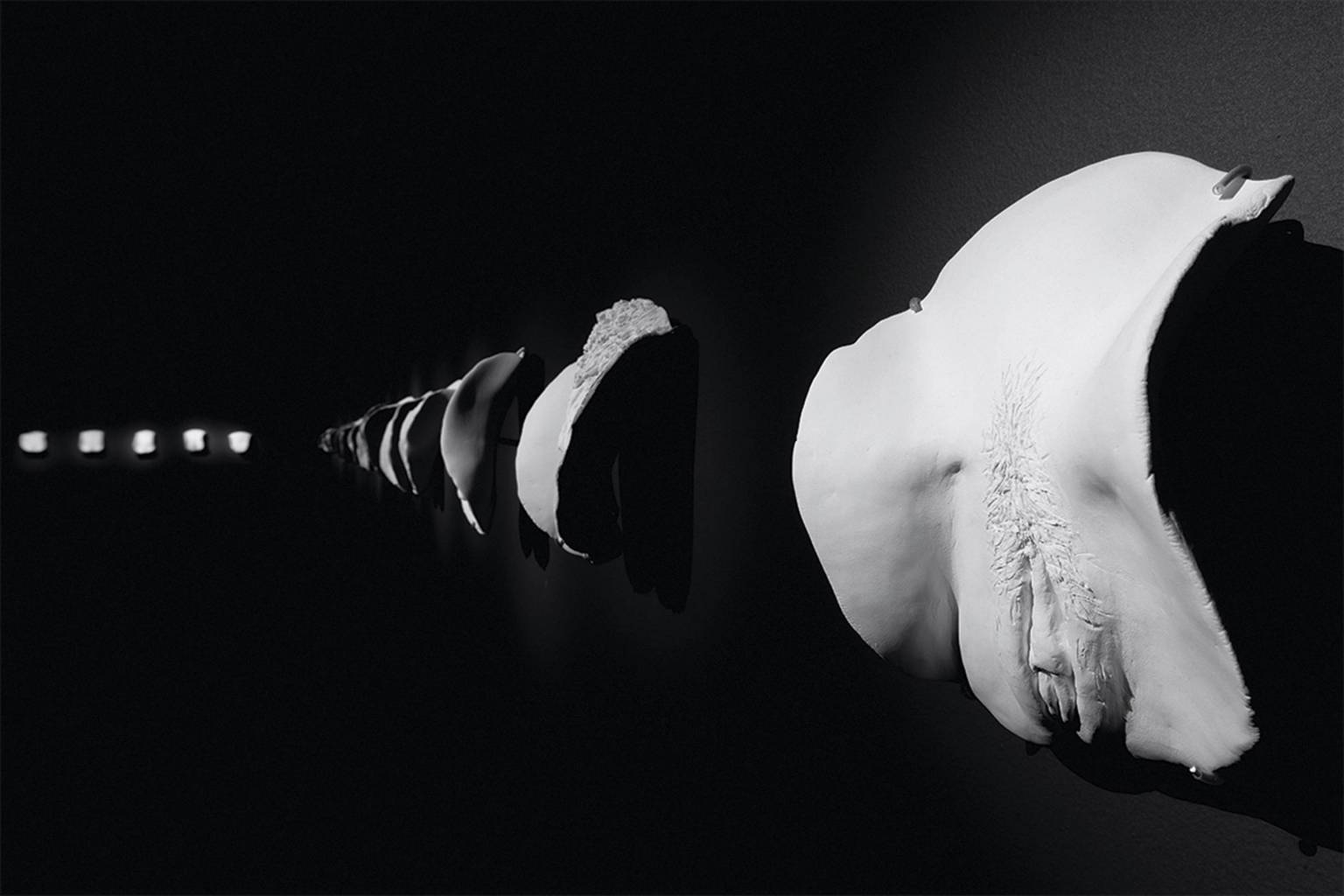
Despite Mona Foma’s appeal as an escape from the northern hemisphere winter, the standout at this remote location is the Dark Mofo festival’s subversive curatorial mission. Founding creative director Leigh Carmichael sees it as a chance to reclaim darkness. The two-week-long citywide event celebrates all things transcendent, ecstatic and primal: “Why can’t darkness be good?” Carmichael asks. “I understand why it’s used as a metaphor for evil, but it isn’t actually. It’s also sublime. The night is a time to dream.”
David Lynch serves as a frequent inspiration. Last year’s festival featured a re-creation of Twin Peaks’s Bang Bang Bar—part of the immersive Night Mass spread over five venues in central Hobart—and performances by Lynch muses Rebekah Del Rio and Chrysta Bell. The seminal industrial group Einstürzende Neubauten has become a repeat guest, along with a program of experimental operas, metal bands and frequently unclassifiable performers.
Hobart has embraced projects one would expect to be tolerated only at more remote festivals like Burning Man.
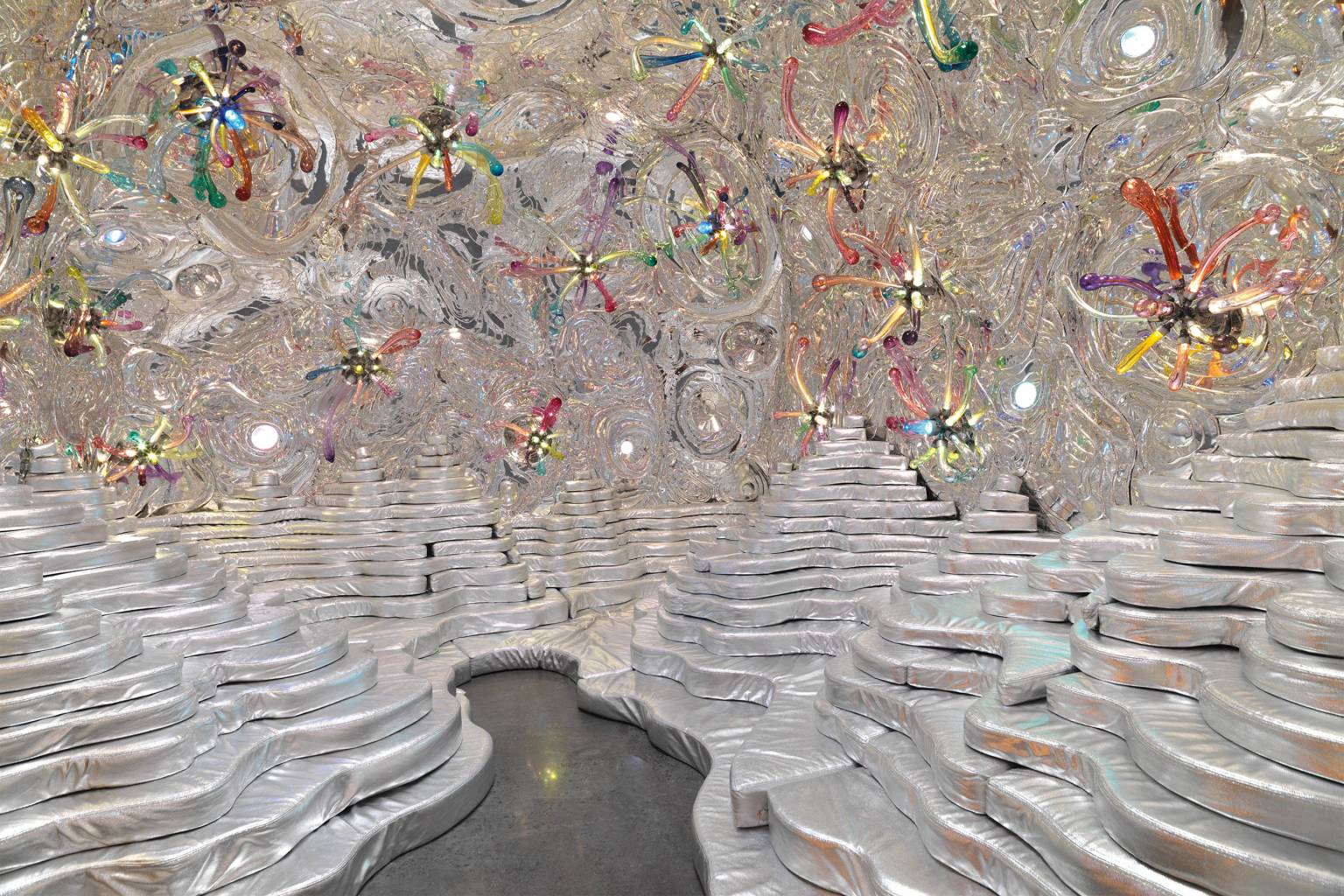
But not everyone appreciates the spectacle. A recent real-estate boom, influenced in part by the tourism boost, has seen Hobart surpass Sydney as Australia’s least affordable city for rentals, which could force out local artists. Glenorchy, where MONA is located, remains one of the state’s most disadvantaged areas, as tourists typically go directly back to Hobart’s more chic restaurants, shops and galleries instead of staying in the suburb. And local Christians took issue with the 33-foot-tall red neon inverted crosses installed along the Hobart water-front for last year’s Dark Mofo. Hobart’s then lord mayor, Ron Christie, sought to withdraw financial support for what he called the “shock festival.”
Last year the city council approved a performance by 73-year-old Sydney-based artist Mike Parr. For three days, Parr buried himself without food in a 25-square-foot steel room underneath a busy downtown street. The piece’s metaphoric resonance of buried knowledge has a universal quality, but in Tasmania it evoked the island’s violent history: In the first half of the 19th century, 90 percent of Tasmania’s indigenous population was massacred by European colonists in the Black War—an attempted genocide that remains unrecognized by the national government and unknown even to many Australians. More than 3,000 people gathered as Parr descended beneath the street, a truck quickly sealed him in with asphalt and the first cars began driving over the chamber. In the crowd, various Aboriginal groups both shouted support and peacefully protested the action. The divide prompted discussions on neglected history that could be heard in coffee shops and restaurants throughout Hobart, among metalheads, visiting visual artists and locals alike.

Painting a New Kind of Masculinity with Artist Xavier Schipani
Schipani depicts a utopian world without gendered boundaries
Familiar pleasures are easy to find, but they can narcotize you into a state of complacency. Enduring a long atonal concert or taking part in a sacrificial ritual may infuriate you but, in doing so, make you look at your surroundings differently, whether you’re home or at the edge of the world. “Just because you have a shit time 999 times out of 1,000 doesn’t mean you shouldn’t do something,” Walsh says. “It means you should.”
